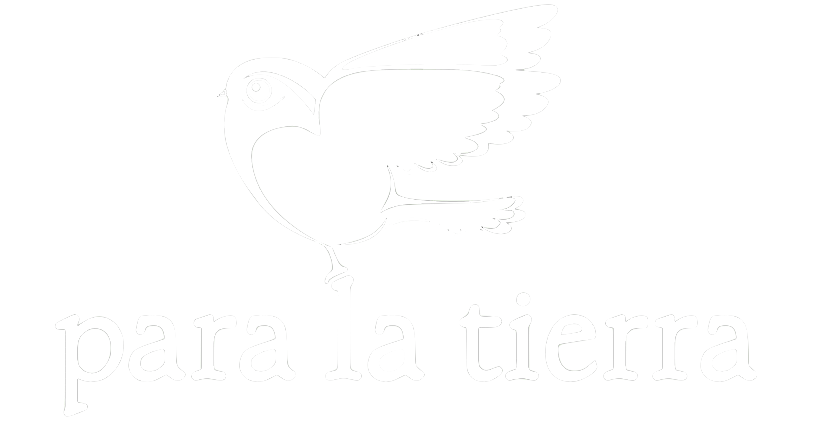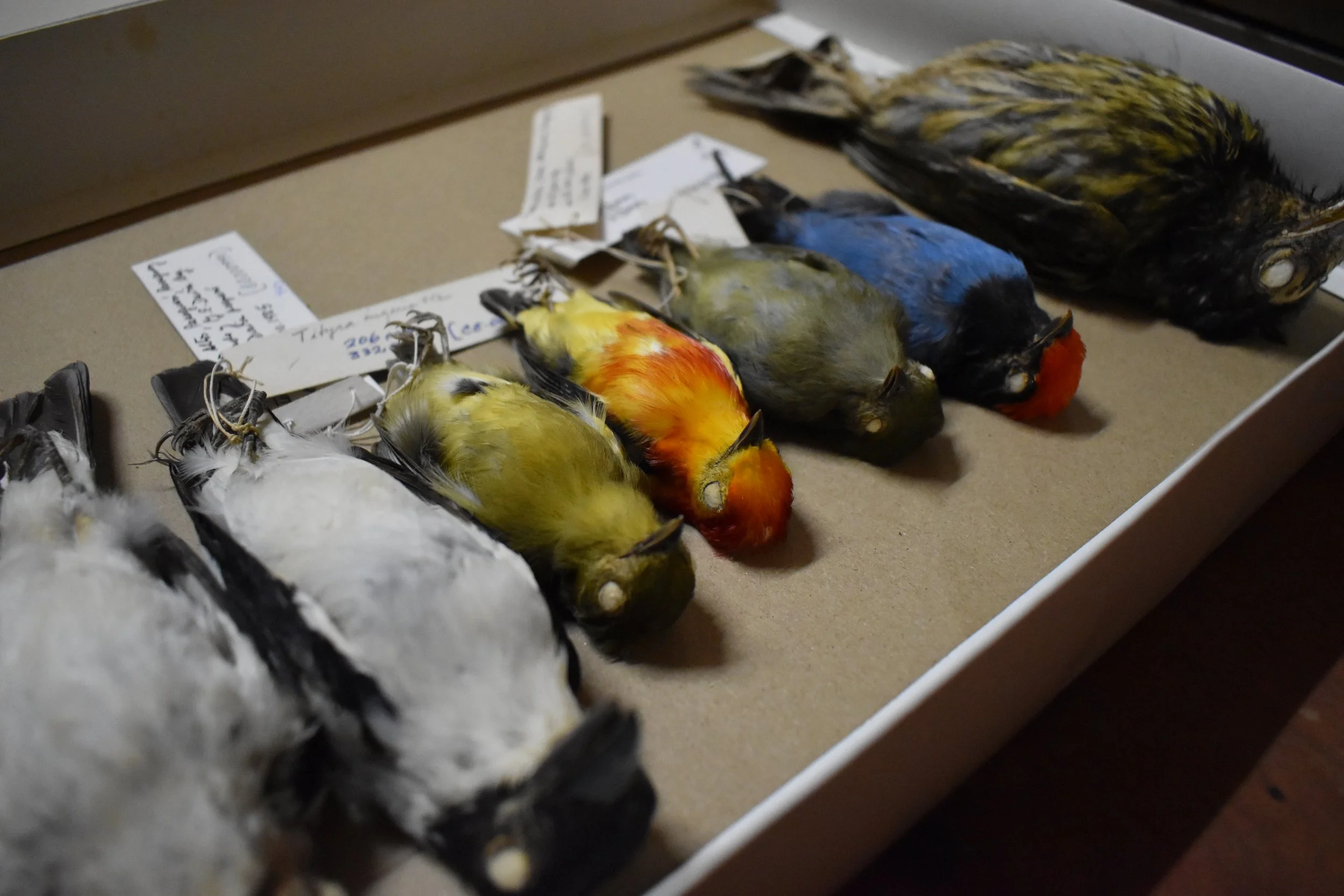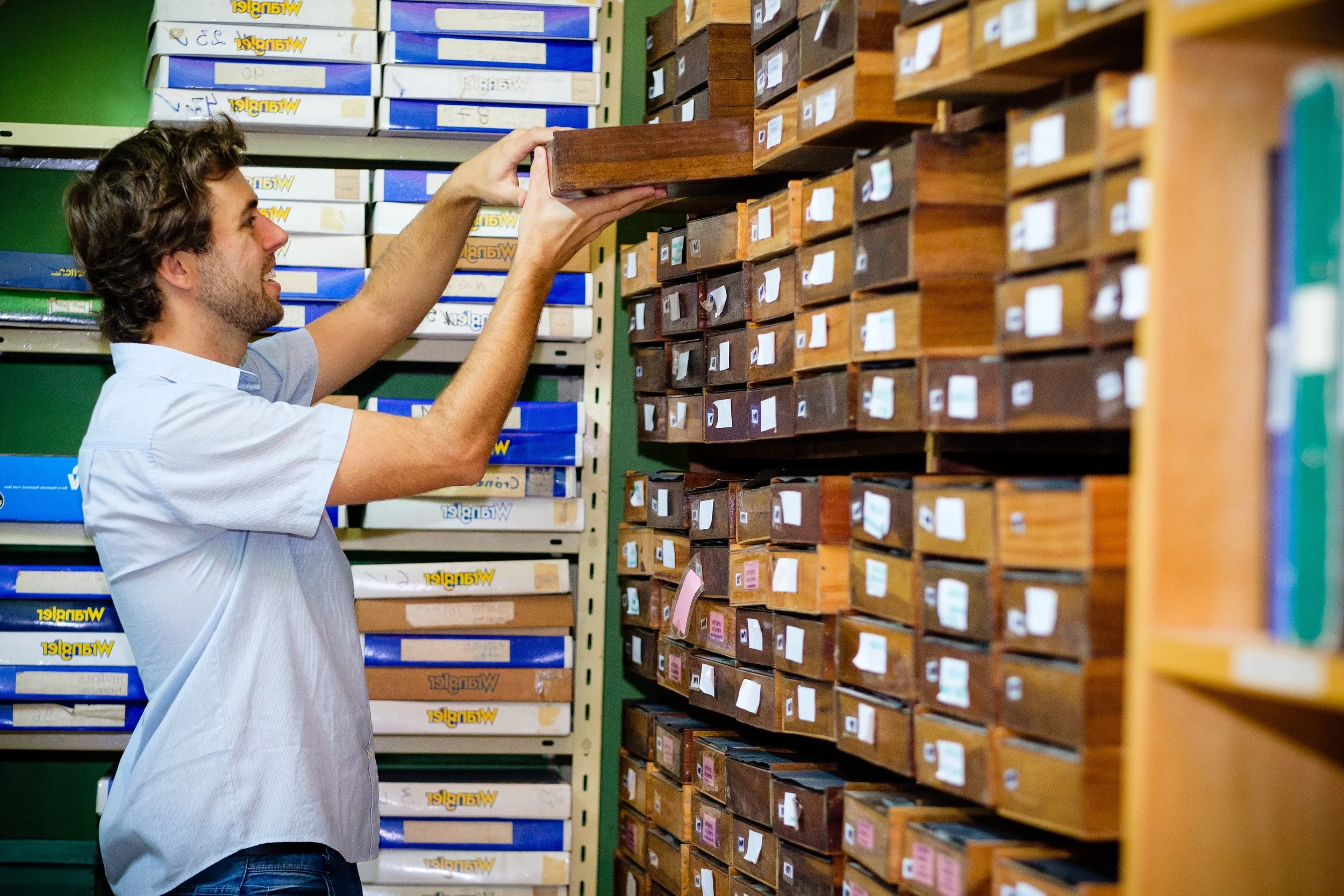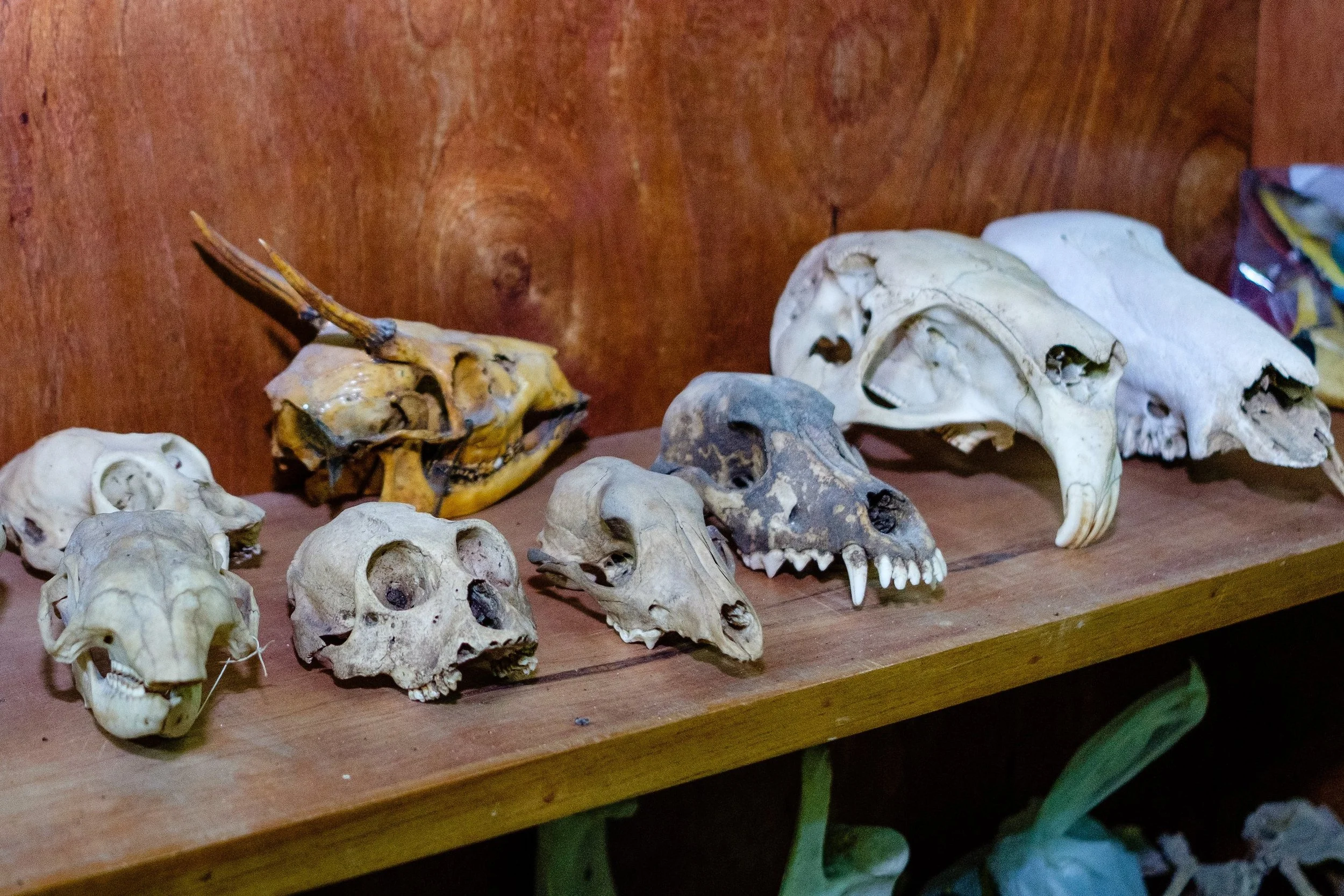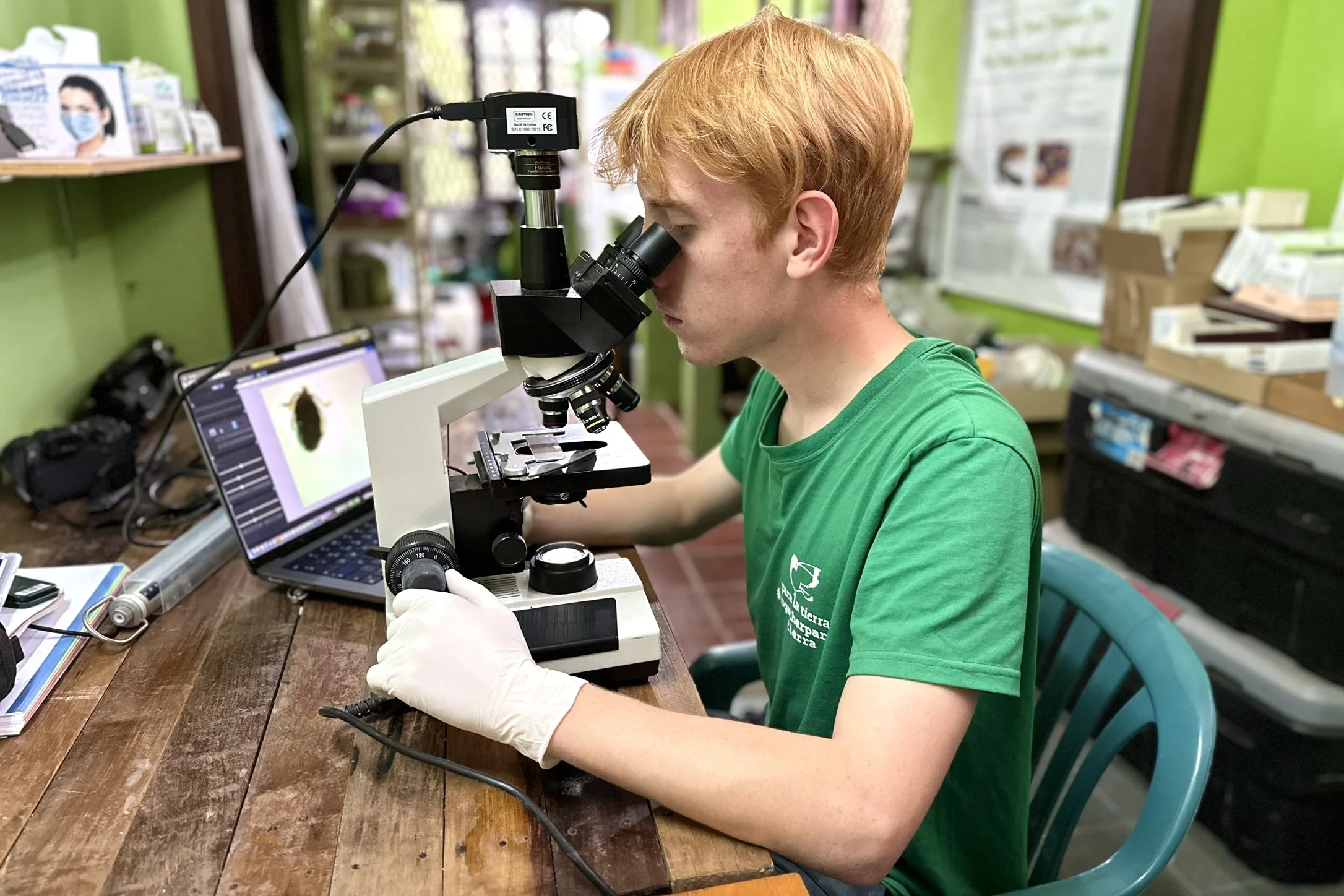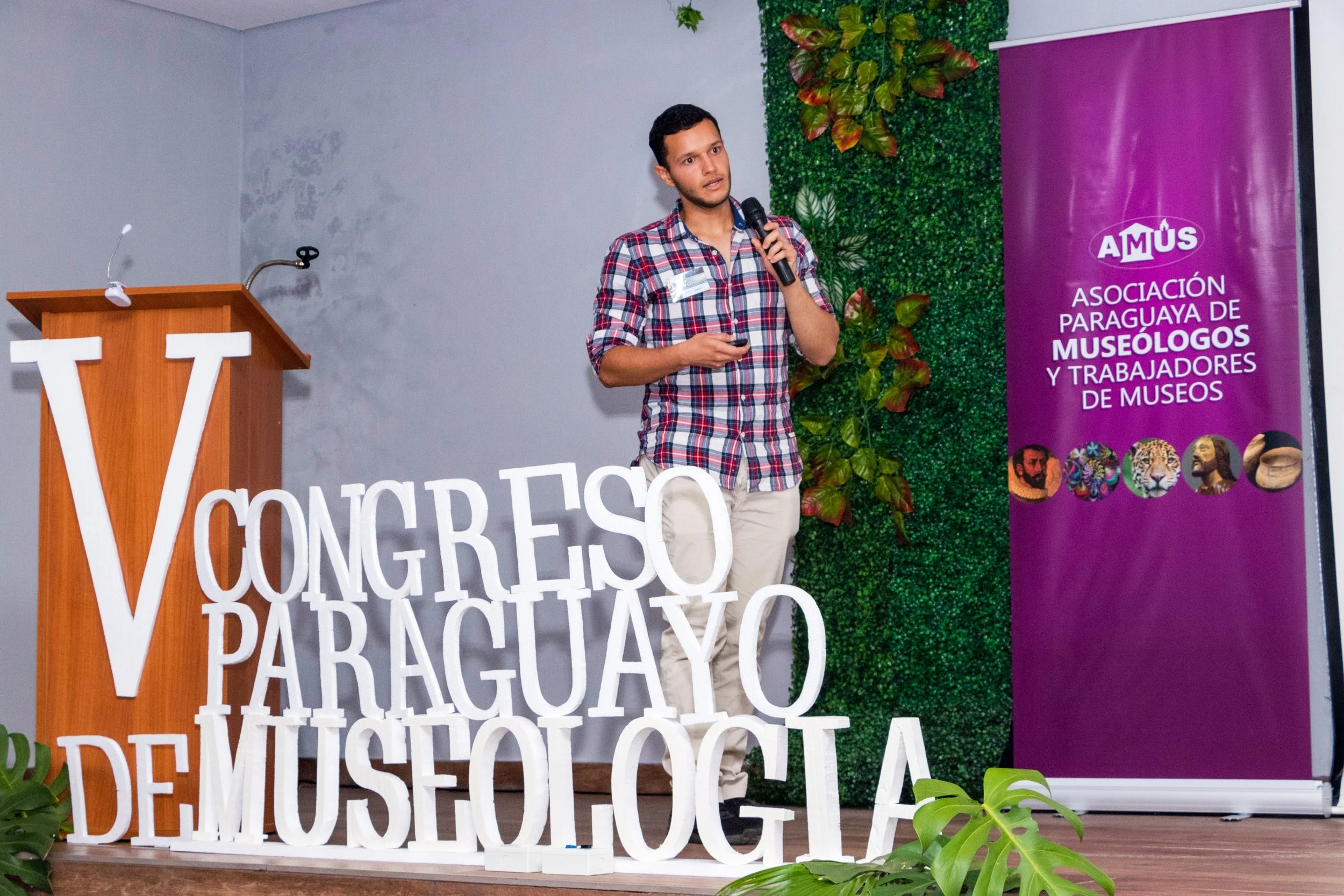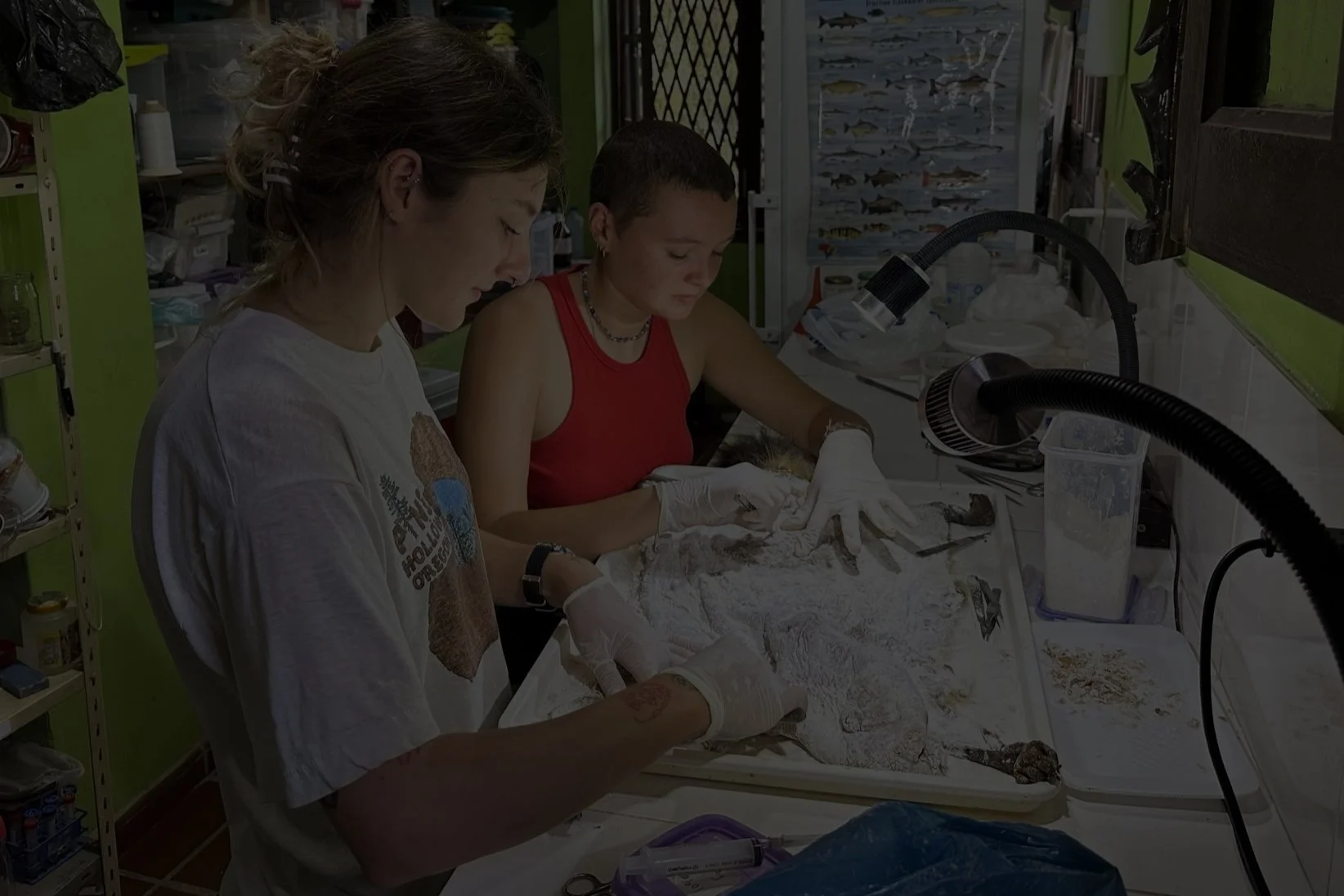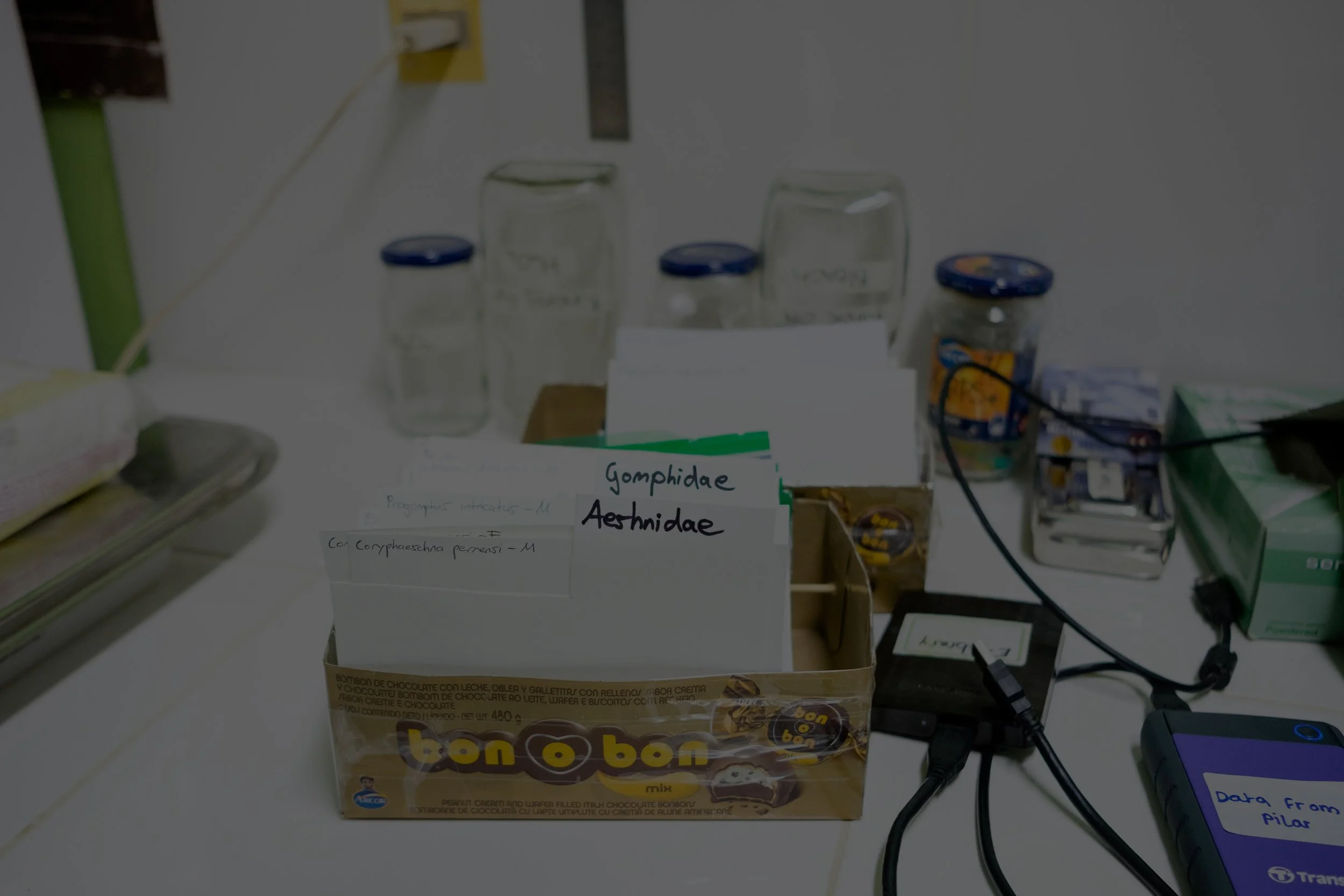We started collecting specimens when Para La Tierra was founded in 2010. We are now proud custodians of the second largest scientific reference collection in Paraguay.
The CCPLT - Colección Científica Para La Tierra (Scientific Collection of Para La Tierra) is an important resource for the conservation of biodiversity in Paraguay, about which little is known.
Many of specimens in our collection were collected by our researchers or found as roadkill. Another large part of the collection was contributed by Don Julio, and his children Andrés and Yolanda, and their collaboration with IBIS - Instiuto de bioecología e investigacíon subtropical (Institute of bioecology and subtropical investigation). A large part of our insect and tuco-tuco collection, and more than 90% of our bird collection derive from this collaboration.
Our reference collection allows us and researchers around the world to record and study Paraguay’s impressive natural history and develop a better understanding of Paraguayan fauna and flora.
CCPLT - La Colección Científica Para La Tierra
The collection includes:
1,000 mammals, including tuco-tucos, monkeys, foxes, a maned wolf, and bats
1,600 birds from 216 species, representing approximately 30 per cent of the Paraguayan avifauna
2,300 herps, including anacondas, vipers, tree frogs, tegus and many more reptiles and amphibians
1,600 fish, including characins, catfish, cichlids, and needlefish
25,000 arthropods, including butterflies, beetles, dragonflies, spiders and other aquatic macroinvertebrates
Research projects
Our scientific reference collection provides our researchers and interns, as well as national and international scientists with a valuable resource. We collaborate frequently with the National Natural History Museum of Paraguay.
Many projects and publications have been based on our collection. These include:
Description of new species for the region
Updates of distribution maps
Creation of an identification key for Paraguayan blind snakes
Discovery of a new spider species that led to the creation of a new genus - Grismadox spp
Description of a new Phalotris species for science - Phalotris shawnella
Description of multiple new spider species for science - Castianeira monai, Actinopus tetymapyta, Actinopus tasneemae, Mazax akephaloi
Description of two new Hyalela species for science - Hyalela julia and Hyalela mboitui
Description of a new Eburodacrys species for science - Eburodacrys mcgavini
Public Access
Our collection is open to the public and we regularly welcome visitors, school groups and fellow researchers. We further present on national and international conferences, and are open to collaborate on projects.
We’re looking forward to hearing from you if you’re interested in any kind of visit or collaboration!
Contact
Nicole Stepan
Nicole is our museum curator and taxonomist. She is responsible for everything around our museum collection, such as preparing and caring for specimens, supervising museum interns, and giving tours of the museum.
If you have any questions regarding our museum collection or want to schedule a visit, you can contact Nicole at paralatierra.py@gmail.com
Intern with our scientific reference collection
From becoming an expert in a taxonomic group, to gaining experience working with taxidermy and preparing all sorts of specimens, our internships offer unique opportunities for people interested in working with scientific collections.
Boost your CV, while contributing directly to preserving biodiversity in Paraguay!
Support our scientific reference collection
Our collection needs financial support to help us expand and improve its infrastructure, better preserve our specimens and find creative ways to educate people about Paraguay’s biodiversity.
Donations also help us purchase new equipment that’s valuable for future and impactful research projects.
